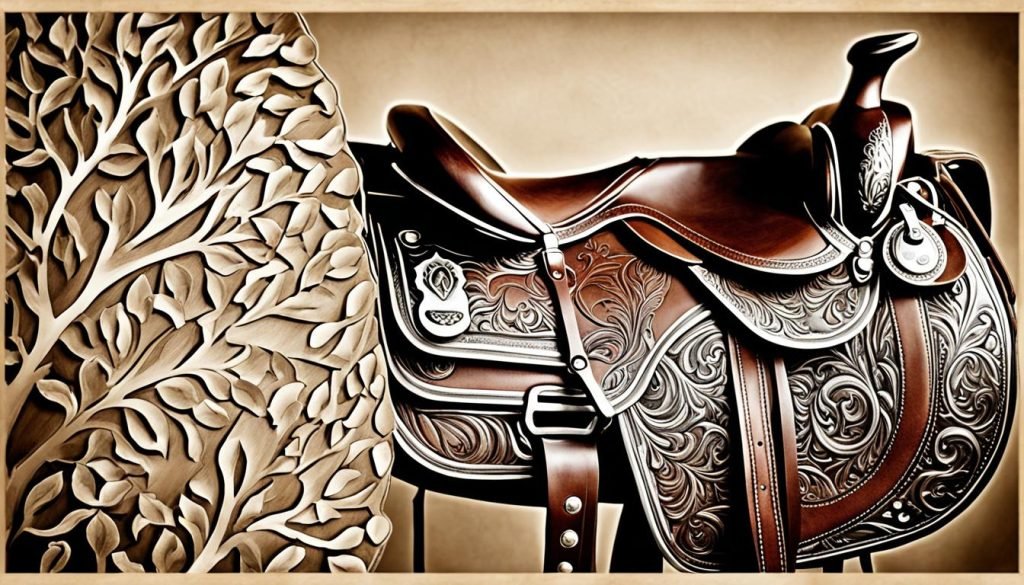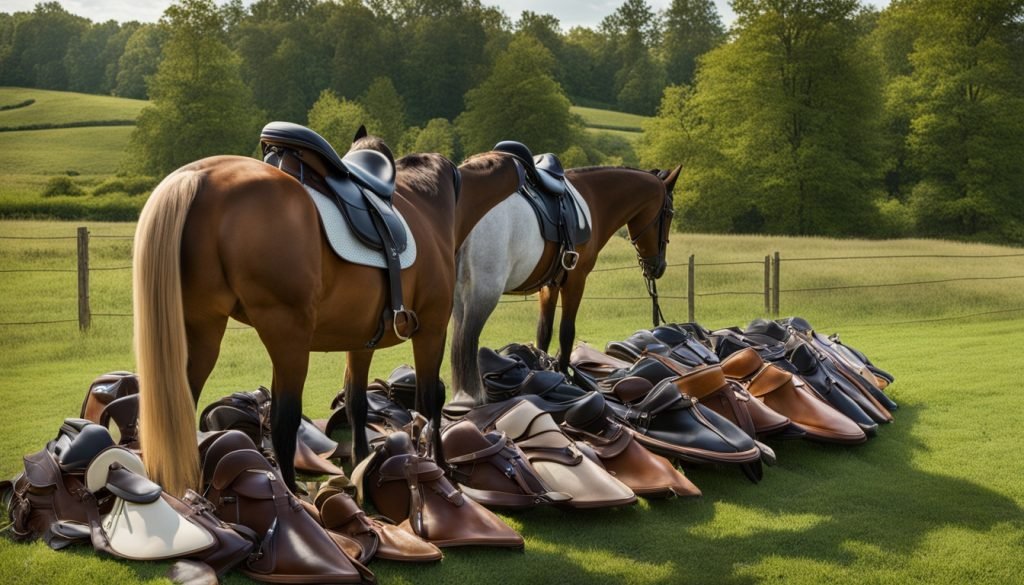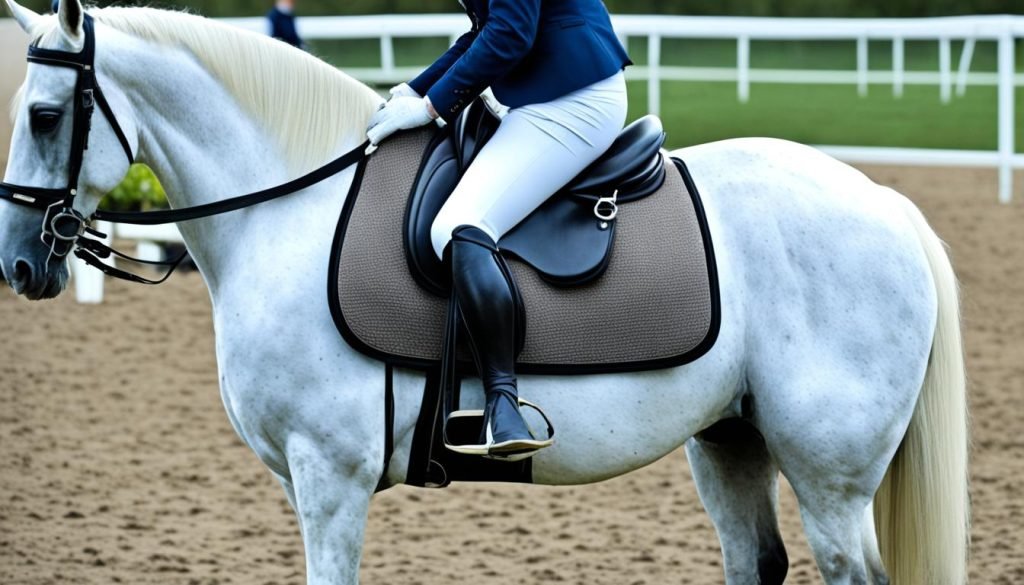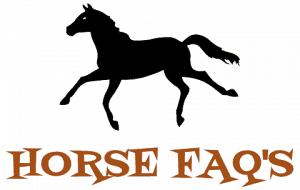Did you know that over 70% of horses exhibit behavioral issues solely due to poor saddle fitting? This striking statistic underscores the importance of selecting the right saddle to ensure both equine comfort and optimal rider and horse saddle compatibility.
Choosing the correct saddle for your horse is crucial for both the horse and rider. It’s not merely about picking something visually appealing or within budget but involves a detailed consideration of factors such as the type of riding, the horse’s build, and the rider’s body type. According to Cordia Pearson, a qualified saddle fitter, a well-chosen saddle ensures functionality and comfort, facilitating better harmony between horse and rider.
Signs of a poorly fitting saddle can be quite telling. Behavioral issues such as the horse refusing to move freely or showing resistance often highlight discomfort. Equally important is how the saddle fits the rider, as this affects posture, leg positioning, and overall comfort. Regular saddle checks, at least once yearly, help maintain the correct fit and ensure that both horse and rider perform at their best.
Key Takeaways
- Proper horse saddle fitting is essential to prevent behavioral problems.
- Consider the type of riding, the horse’s build, and the rider’s body type when selecting a saddle.
- A well-fitted saddle ensures equine comfort and improves rider and horse saddle compatibility.
- Behavioral issues like resistance or reluctance to move freely can indicate poor saddle fitting.
- Annual professional saddle checks are recommended to maintain proper fit and comfort.
Understanding Saddle Types
When it comes to equestrian equipment, selecting the right saddle tailored to specific riding disciplines is crucial. Different saddles cater to various activities, whether you need something for long rides or performance sports. Here, we break down some common types of saddles to help you make an informed choice.
Western Saddles
Western saddles are iconic in horseback riding, widely used for ranch-related activities and western riding disciplines like reining and roping. These saddles feature a prominent horn and a deep seat, providing stability and comfort for long hours in the saddle. They’re ideal for activities requiring quick maneuvers and secure seating.
English Saddles
English saddles are streamlined and lighter, commonly used in disciplines such as jumping, eventing, and show jumping. Their flatter seats and closer contact with the horse allow for greater communication between rider and horse. Riders often favor English saddles for their versatility in competitive equestrian sports.
Trail Riding Saddles
Designed with comfort in mind, trail riding saddles are perfect for long journeys. They focus on providing both rider and horse comfort over extended periods. These saddles often have additional padding and ergonomic designs to support various terrains encountered during trail riding.
Dressage Saddles
Dressage saddles cater to the precise demands of dressage riding disciplines. They boast longer flaps and a deeper seat, enabling the rider to maintain a balanced and upright position. These features help the rider to influence the horse’s movements effectively during intricate dressage maneuvers.
Here is a comparative overview of the different saddle types:
| Saddle Type | Primary Use | Key Features |
|---|---|---|
| Western Saddles | Ranch riding, reining, roping | Deep seat, prominent horn |
| English Saddles | Eventing, show jumping | Lighter, flatter seat |
| Trail Riding Saddles | Long trail rides | Extra padding, ergonomic design |
| Dressage Saddles | Dressage competitions | Long flaps, deeper seat |
Key Parts of a Saddle
The intricacies of saddle construction are paramount to both the comfort of the horse and the rider. Understanding the fundamental saddle parts can greatly enhance one’s knowledge in selecting the right equine tack components.
Saddle Trees
At the core of every saddle lies the saddle tree, a structural framework that defines its shape and weight distribution. Saddle trees are typically made from wood or synthetic materials and are designed to provide optimal comfort to the horse by evenly distributing the rider’s weight.  The strategic design of the saddle tree ensures that no undue pressure is placed on any part of the horse’s back, preventing pressure points and enhancing overall comfort. One crucial component within the tree is the gullet, which runs along the saddle’s length, offering necessary clearance for the horse’s spine.
The strategic design of the saddle tree ensures that no undue pressure is placed on any part of the horse’s back, preventing pressure points and enhancing overall comfort. One crucial component within the tree is the gullet, which runs along the saddle’s length, offering necessary clearance for the horse’s spine.
Saddle Pads
Sadle pads are another integral part of the saddle setup, placed directly between the saddle and the horse’s back. Saddle pads serve multiple purposes, primarily providing cushioning to the horse while also aiding in the distribution of the rider’s weight. This is essential in preventing the formation of pressure points that could lead to saddle sores. When considering saddle parts, the panels, which sit underneath the saddle and make contact with the pad, play a pivotal role in ensuring a snug fit. Ensuring that saddle pads are properly fitted and maintained can significantly enhance the longevity of your equine tack components and improve riding comfort for both horse and rider.
The Importance of Saddle Fit for Your Horse
Ensuring a proper saddle fit is vital for maintaining equine health. A poorly fitting saddle can lead to a variety of issues such as restriction, sweating, and even painful saddle sores.
During a saddle fit evaluation, it’s crucial to consider the horse’s back, withers, and shoulders to find a saddle that fits well and allows for unrestricted movement. This attention to detail can help prevent discomfort and pain, promoting better relationship and performance between the horse and rider.
Regular saddle checks are essential in detecting signs of discomfort early. Swelling, behavioral issues, or reluctance to move freely are clear indicators that a re-evaluation of the saddle fit may be necessary. Professional fitting services can assist in ensuring the saddle remains suitable as the horse’s physique changes over time.
A well-fitted saddle not only prevents physical issues but also contributes to optimal performance and saddle sores prevention. With proper care, your horse can move more freely, be happier, and engage more actively in various riding activities.
In summary, achieving the correct saddle fit is indispensable for maintaining equine health, enhancing optimal performance, and ensuring saddle sores prevention. Regular evaluations by professionals will keep your horse performing at its best.
How to Choose the Right Saddle for Your Horse
Understanding the nuances of equine behavior and paying close attention to saddle fit indicators is crucial. Your horse’s comfort and your riding efficiency hinge on this decision. The saddle selection guide emphasizes the importance of recognizing your horse’s conformation. Physical signs like white spots or uneven sweating directly relate to a poorly fitting saddle.

Professional saddle fitting is not merely a luxury but a necessity. A professional can evaluate horse conformation better and suggest appropriate adjustments. Incorporating regular saddle checks into your routine maintenance ensures the horse remains free of pressure points and enjoys unrestricted movement.
“A well-fitted saddle is integral to both the horse’s performance and the rider’s comfort,” says Cordia Pearson, renowned saddle fitter.
The ultimate goal is to find a saddle that complements your horse’s anatomy and enhances its natural gait. Regular evaluations by experts and keen observation of your horse’s physical and behavioral signs will guide you in selecting the perfect saddle.
Saddle Fit for the Rider
Ensuring the perfect saddle fit for the rider is crucial for maintaining a proper riding position and maximizing rider comfort. The saddle must support the rider’s posture, assist in balance, and eliminate any potential discomfort during riding sessions. Below, we explore two key aspects in rider saddle fit: evaluating seat size and stirrup adjustment.
Evaluating Seat Size
When evaluating seat size, it’s essential to choose a saddle that provides adequate space for the rider’s seat. A seat too small will cause the rider to feel cramped, while an overly large seat can lead to instability. Proper rider saddle fit ensures that the rider’s pelvis is correctly positioned for balance and control, which is critical for both performance and comfort.
Position of the Stirrup
Stirrup adjustment plays a significant role in achieving a proper riding position. The stirrups should be adjusted to align with the rider’s leg length, allowing for a relaxed and balanced feel. Incorrect adjustment can result in discomfort and compromised balance, affecting overall riding comfort. Expert saddle fitters often recommend periodic checks and adjustments to maintain optimal posture and stability.
| Factors | Considerations |
|---|---|
| Seat Size | Ensure comfort without feeling cramped or too loose. |
| Stirrup Position | Adjust based on leg length for effective balance and support. |
| Professional Assistance | Seek advice from experienced fitters for ideal saddle fit. |
| Rider Comfort | Key to prolonged riding enjoyment and performance. |
Common Saddle Fit Problems and Solutions
Addressing saddle fit issues is crucial for maintaining a comfortable and effective riding experience for both horse and rider. Problems often arise from the saddle being either too narrow or too wide, which can cause the rider to tip forward or feel left behind the horse’s motion. These issues might lead to discomfort and even behavioral problems in horses.
Saddle adjustment can help alleviate these concerns. Professional fitting services are highly recommended for solving fit problems. Common fixes include reflocking panels or changing girth straps to better suit the horse’s conformation. A well-fitted saddle should support the rider’s natural posture without causing any restriction or pain to the horse.
Regular tack maintenance and fitting reviews are vital. They ensure that any developing saddle fit issues are promptly addressed, promoting continuous rider-horse harmony. By staying proactive, riders can maintain the well-being of their horses and enhance their overall riding experience.

Maintaining Your Saddle
Proper saddle maintenance is an essential practice for ensuring the comfort of your horse and the longevity of your saddle. Regular upkeep involves a few critical steps that can make a significant difference in performance and durability. By integrating routine cleaning, conditioning, and frequent fit checks, you can safeguard the well-being of both horse and rider.
Routine Cleaning
Routine cleaning should be a foundational part of your saddle maintenance routine. Dirt, dust, and sweat can accumulate on your saddle, potentially affecting its condition and performance. Use a soft brush to remove loose debris, followed by a damp cloth to wipe away residue. Regular cleaning not only maintains the saddle’s appearance but also prevents abrasive damage that can weaken the leather over time.
Conditioning Leather
Leather conditioning is crucial in preserving the suppleness and durability of your saddle. Applying a quality leather conditioner after cleaning helps to keep the leather soft and pliable, reducing the risk of cracking or stiffening. Make sure to choose products that are specifically designed for equestrian tack, as these formulations are tailored to protect and nourish leather used in saddles.
Checking Saddle Fit Regularly
Regular saddle checks are just as important as cleaning and conditioning. A well-maintained saddle can still become an uncomfortable fit for your horse over time due to changes in the horse’s shape, such as weight fluctuation, aging, or muscle development. Frequent saddle fit evaluations ensure that your saddle continues to provide optimal comfort and performance. By staying proactive with these checks, you can promptly address any issues, preventing discomfort and potential injury to your horse.
In summary, comprehensive saddle maintenance can significantly extend the life of your saddle and enhance the riding experience for both you and your horse. By incorporating routine cleaning, leather conditioning, and regular fit assessments into your maintenance regimen, you ensure a harmonious and effective partnership between horse and rider.
FAQ
How do I choose the right saddle for my horse?
Choosing the correct saddle involves considering the type of riding, budget, the horse’s build, and the rider’s body type. It’s recommended to seek advice from a qualified saddle fitter like Cordia Pearson. Signs of a poorly fitting saddle include behavioral issues and discomfort in the horse.
What are the different types of saddles available?
Different saddle types are designed for varying riding disciplines. Western saddles are ideal for ranch activities and sports like reining. English saddles are lighter and used in competitive riding. Trail riding saddles prioritize comfort for long rides, and dressage saddles are designed for flatwork and precision.
What is a saddle tree?
The saddle tree is the frame on which the saddle is built. It determines the saddle’s shape and weight distribution, ensuring comfort for the horse. It can be made from wood or synthetic material and supports the gullet, which provides clearance for the horse’s spine.
How important is saddle fit for my horse?
Proper saddle fit is crucial to prevent behavioral issues and physical discomfort in your horse. A poorly fitting saddle can cause restriction, sweating, swelling, and saddle sores. Regular checks and professional fitting services ensure your horse remains comfortable and performs optimally.
What should I consider when selecting a saddle for different riding activities?
Riders should choose saddles based on their preferred activities. For example, dressage saddles are optimal for flatwork and maneuvers, while trail riding saddles provide comfort for long distances. Understanding your horse’s conformation and performance requirements is also essential.
How do I ensure a good saddle fit for myself?
When fitting a saddle to the rider, the seat size should allow for comfortable sitting without feeling cramped, and the stirrup position should support balance and leg stability. Proper fit prevents issues like backache and an unbalanced riding position.
What are common saddle fit problems and their solutions?
Common problems include the saddle being too narrow or wide, causing tipping forward or backward. Solutions often involve professional fitting services or adjustments like reflocking panels or changing girth straps to ensure no restriction or pain for the horse and supporting the rider’s posture.
How should I maintain my saddle?
Maintaining a saddle involves routine cleaning to remove dirt and sweat, conditioning the leather to keep it supple, and regularly checking the fit. Changes in your horse’s shape can affect fit over time, so proactive maintenance ensures comfort and safety for both horse and rider.
